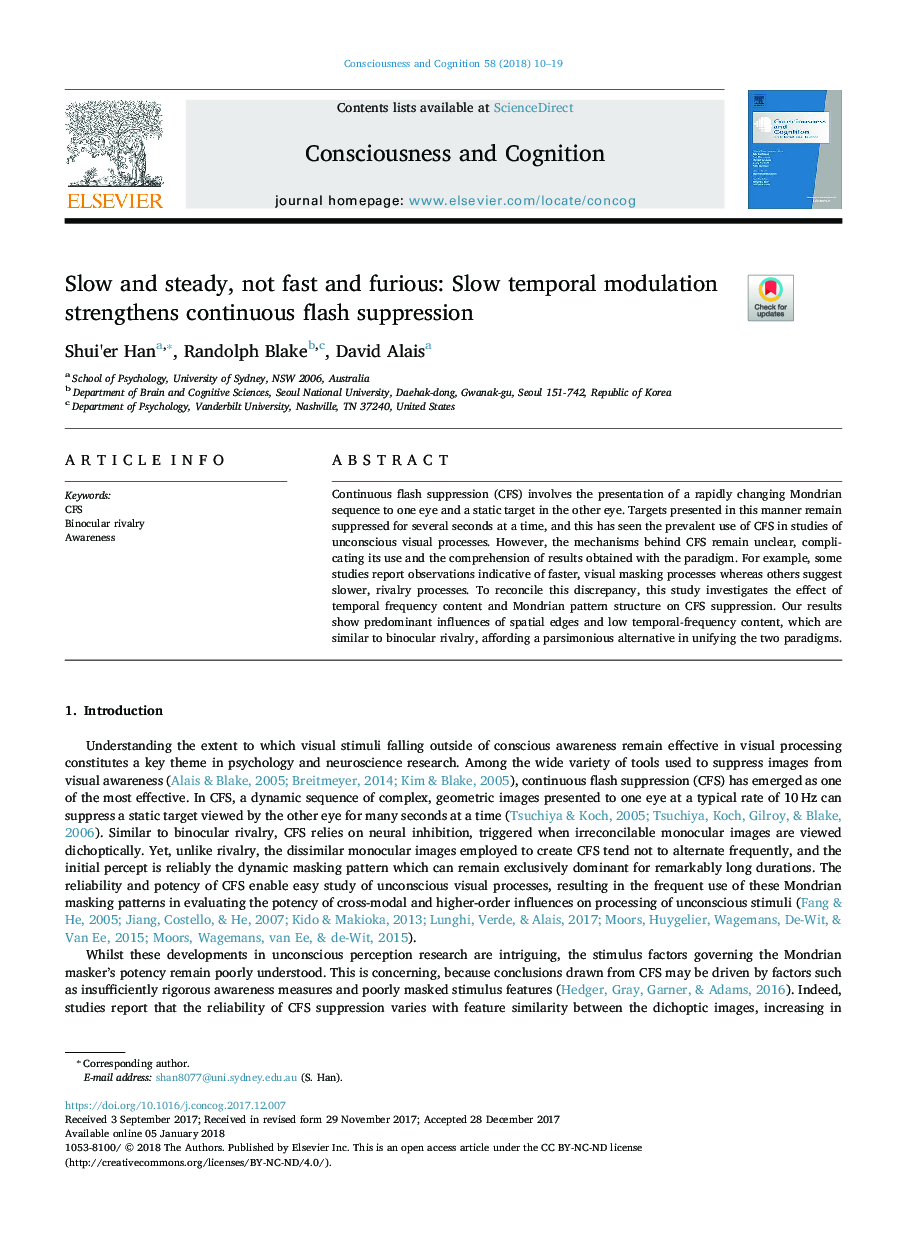| Article ID | Journal | Published Year | Pages | File Type |
|---|---|---|---|---|
| 7288086 | Consciousness and Cognition | 2018 | 10 Pages |
Abstract
Continuous flash suppression (CFS) involves the presentation of a rapidly changing Mondrian sequence to one eye and a static target in the other eye. Targets presented in this manner remain suppressed for several seconds at a time, and this has seen the prevalent use of CFS in studies of unconscious visual processes. However, the mechanisms behind CFS remain unclear, complicating its use and the comprehension of results obtained with the paradigm. For example, some studies report observations indicative of faster, visual masking processes whereas others suggest slower, rivalry processes. To reconcile this discrepancy, this study investigates the effect of temporal frequency content and Mondrian pattern structure on CFS suppression. Our results show predominant influences of spatial edges and low temporal-frequency content, which are similar to binocular rivalry, affording a parsimonious alternative in unifying the two paradigms.
Keywords
Related Topics
Life Sciences
Neuroscience
Cognitive Neuroscience
Authors
Shui'er Han, Randolph Blake, David Alais,
